ASUS Republic of Gamers and X79 ROG Review – Rampage IV Gene, Formula and Extreme
by Ian Cutress on August 3, 2012 1:00 PM EST- Posted in
- Motherboards
- Asus
- X79
- ROG
As a departure from previous reviews, as we are looking at three similar boards that are separated within their feature set, there are a lot features that are shared between two or all three of them. As such, we are separating these features by their primary implementation, either Hardware or Software, and talking about them each in turn. They are further split into features that are specific to the ROG branding, and those that ASUS showcase on their channel motherboards (LE, Pro, Deluxe, Premium) as well.
ROG Connect – Gene, Formula and Extreme
Every one of the ROG boards is focused on overclocking. If you have read through the summaries of the motherboards, you will understand that the Extreme is the one most geared to take the more ‘enthusiast’ (read sub-zero) conditions. But all three of the ROG Rampage IV products are aimed to get the most out of the hardware should the user request it. One of these features is ROG Connect.
The premise of ROG Connect is simple – use another device (laptop, PC) to monitor, control and adjust the speeds and subtimings on the fly of the main product. This requires installation of a a client on the laptop, a USB cable between them both, and away you go. To use ROG COnnect for GPU tweaking, a server needs to be installed on the host as well.
Each of the ROG boards has a white USB port, and comes supplied with a white USB cable specifically for ROG connect. When plugged in and set up, the client has a screen similar to this when the host (the ROG board) is powered down:
By using RC Remote, the host can be turned on/off/reset at will. Turning the machine on will also cause RC Poster to activate, indicating what stage the POST sequence is at:
When active, a user has full control of the BCLK and CPU voltages of the system. The ROG Connect software also offers a monitoring tool which takes the readings from sensors off the board in use.
I like this tool for minor tweaks to extreme overclocking – it saves loading up AI Suite or anything similar, as well as giving details regarding POST issues. It also has benefits in monitoring and diagnosing a system without delving into the BIOS.
ROG OC Key – Extreme
The OC Key is a Rampage Extreme feature only, but this works much in the same way as ROG Connect does but uses an interface on the system being used. The supplied key has a DVI input and DVI output, which goes in between the GPU and DVI cable of a monitor. This allows the device to display an overlay on the monitor, stating CPU speeds and other information:
By using a cable from the OC Key into the Motherboard, this overhead is navigable within the menu system using a normal keyboard. This offers a wide range of options for overclocking – adjustment of BCLK and Multiplier, as well as voltage changes.
The nature of the OC Key means that it is GPU independent – as long as it has access to a DVI port, it should be great.
ROG Audio – SupremeFX III on Gene and Formula
SupremeFX III, rather than a separate chip from Creative, is ASUS’ own audio solution. Where other manufacturers may show they have improved power delivery by initiating a Class I, II or III, ASUS have done the same with Audio. This means that at each stage or class, the ‘Supreme FX’ solution has added features to boost it above other methods.
In our SupremeFX III, we essentially get a Realtek codec (presumed ALC898), but by being stage III this chip is isolated from the rest of the board, has a separate EMI shield around the chip, its own PCB layer for audio tracing, a 1500µF capacitor to reduce ripple, and gold plated audio jacks to minimize resistance. As a result, the SNR is increased to 110dB.
They key for SupremeFX III is also in the certification and correlation to industry standards. This includes EAX 5.0 HD, Creative ALchemy and THX® TruStudio™ PRO, which is all built around the dedicated audio suite Sound Blaster X-Fi MB2.
ROG Subzero Sense – Extreme
In the world of sub zero overclocking, temperature is everything. In order to run the processor faster, it needs more voltage (or better settings). More voltage means more power required, which results in more heat generated, and the best way to get rid of that is with substances that absorb heat – such as dry ice, liquid nitrogen, or a phase change cooler.
More often than not, one piece of the setup will have a cold bug – i.e. at a certain temperature, the CPU or motherboard (or something else) would have the physical environment changed so much that it no longer functions. If it is warmed back up again, it works. If this prevents the system turning on, it is called a cold boot bug. These cold bugs vary between processors, between samples, between items from the same batch even. The processor for example may be a good one and not come with a cold bug, or certain architectures definitely will not work below -50°C. This is where having a temperature probe that works at that level comes in handy.
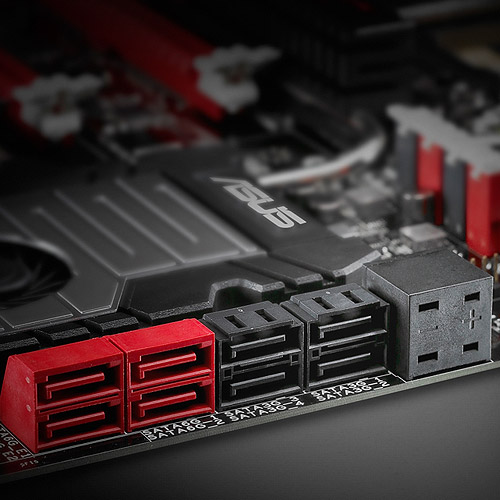
The probe itself determines the accuracy, but the sensor is the one dealing with the interpretation. Typically onboard sensors on motherboards (or graphics cards) refuse to work below 0 degrees Celsius, so having a device which is both accurate and quick to respond is crucial. For most sub-zero overclockers, this means getting a Fluke-style thermometer to read the temperatures, which is an added expense. ASUS hopes to avoid that expense for these enthusiasts with Subzero Sense, by giving values straight through the hardware. Sounds like a great idea. In practice, while I can only say anecdotal evidence, overclockers still prefer to use the Fluke-style thermometers for accuracy, but in the absence of them, the Subzero Sense aims to be a backup in case of emergency. All values from Subzero Sense are filtered to the OC Key for the overhead display.
ROG VGA Hotwire – Extreme
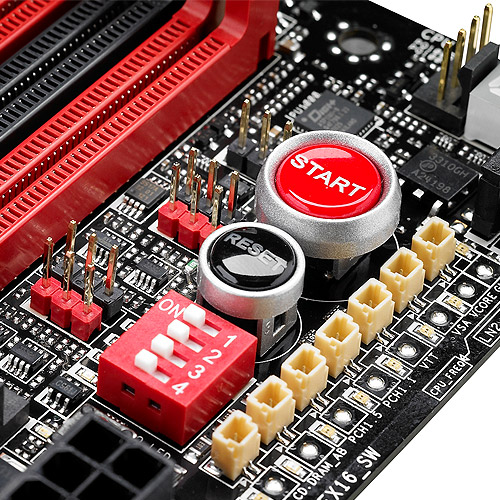
Extreme overclockers are not always CPU based. Some of the best overclockers combine CPU and GPU with a heavy dose of 3DMark to get world records. Over the past 10 years, GPU designers and manufacturers have got wise to this, and overclocking GPUs is now easier than ever before. However, there are still some barriers.
GPUs often have a variety of physical limitations that extreme overclockers need to pass through. Often, the firmware limits the voltage that can be passed through (to stop novice users blowing cards up), or limits the memory clock, or has its own choice as to whether to protect the power delivery subsystem. To adjust all these, GPUs are often hard modded – additional resistors or variable resistors are soldered directly on to the board to bypass these limits after hours of painstaking work going through the whitepapers describing the product.
ASUS want to be at the forefront of this, so they have introduced a feature called VGA Hotwire onto the Extreme. With any GPU (either the user finds the appropriate connectors or buys an ASUS card with them clearly labelled), the extreme user can connect the indicated points on the GPU PCB to the VGA Hotwire connectors on the motherboard. This gives the overclocker full control of the voltages through software or the OC Key. What previously required multimeters and variable resistors should now be an easier walk in the park for these enthusiasts (as long as the correct combination of hardware and software is used).
ROG X-Socket – Formula and Extreme
Despite the ROG series being a high end product line, there are still requests that users want to keep that $100 CPU cooler they purchased for their previous high end system. In order to cater for these, ASUS have included a dual socket retention system for the reverse of their boards – on LGA2011, the CPU cooler needs more force (70 lb/in^2) compared to previous generations (50 lb/in^2) in order to work effectively. Hence the default socket solution for securing CPU coolers is very substantial. However, despite the socket holes for LGA2011 being the same as those for LGA1366 (X58 chipset), due to this bulk the coolers are not compatible.
ASUS have included their X-Socket system, essentially a new base plate such that users can use their old LGA1366 cooler as required. With a Torx Allen key and a few twists, the change can be done in under a couple of minutes.
ASUS Extreme Engine Digi+ II
Power delivery is a touchy subject when it comes to motherboard design. At the top level, designs are separated into those that are considered 'analog', and those that are 'digital'. Digital designs often offer more customizability for the manufacturer and the user. These customizations can offer a variety of options - for ASUS we have the following:
This gives users wanting to give more headroom for their overclockers the opportunity to so, or to help extreme enthusiasts push the limit of the hardware.
The other side of all of this is that for the most part, the majority users will not notice the difference in their power delivery - it is very rarely the limiting factor in any case due to the evolution of modern designs. I have never come across a user who has specifically bought a product due to the feature set attributed to the power delivery - it comes secondary to many other features. Nevertheless, ASUS have used the Digi+ design up and down their range, but with the ROG boards this is bolstered by improved components and along with the enhanced VRM over the channel boards, aim to help users manipulate their hardware as they would like.


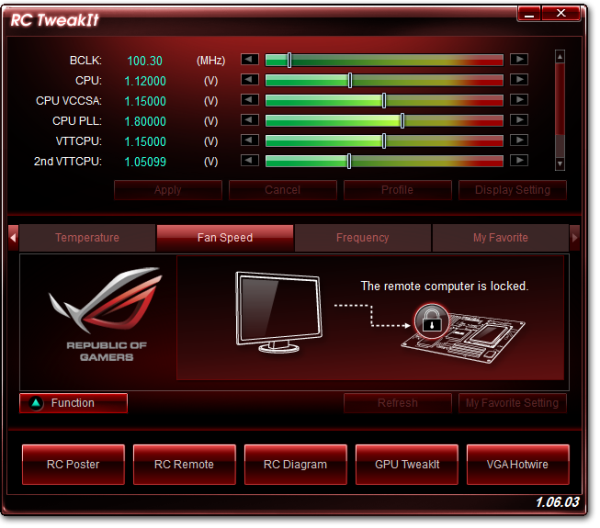







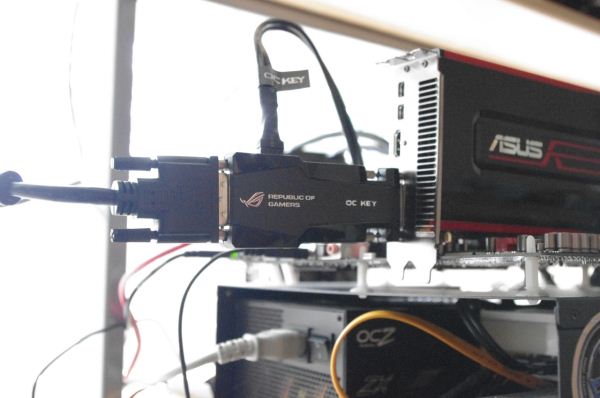
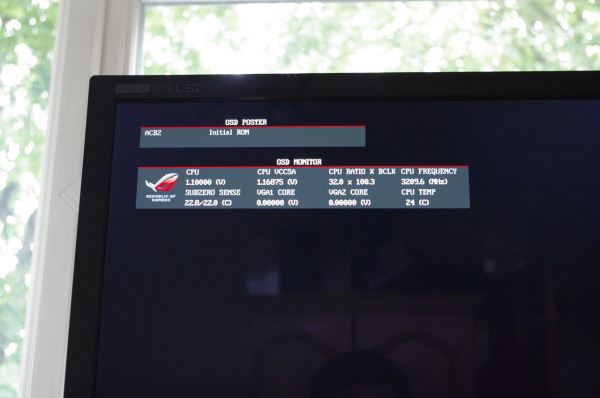
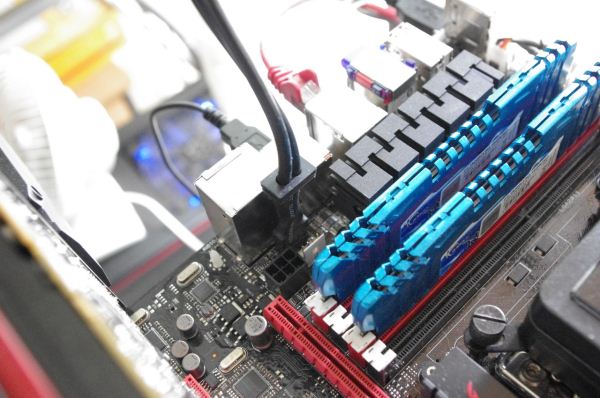

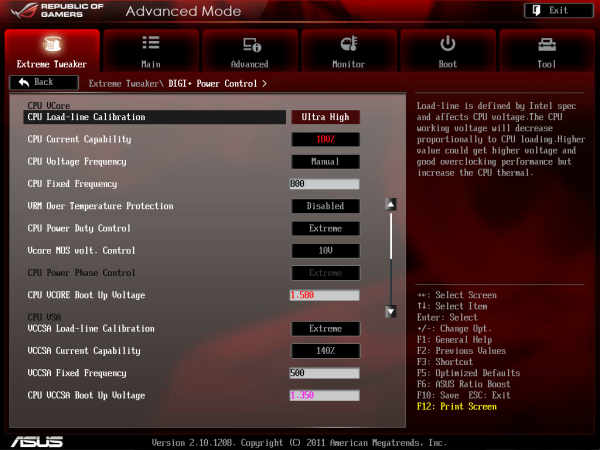
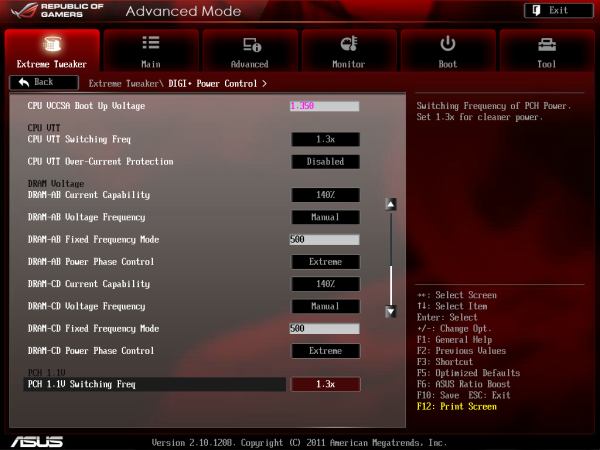








34 Comments
View All Comments
jontech - Friday, August 3, 2012 - link
But sounds kind of cool,.Helps that Asus makes it :)
Paulman - Friday, August 3, 2012 - link
Asus Republic of Gamers also holds Starcraft tournaments, as well! That's how I first heard of their brand. In fact, the ASUS ROG Starcraft II Summer 2012 tournament is on right now and I'm watching a game vs. EG.IdrA and EG.Puma (same team, but one American teammate versus a Korean teammate).For more info on this tourney, see: http://rog.asus.com/142982012/gaming/join-the-rog-...
primeval - Friday, August 3, 2012 - link
A fun tournament thus far.For the branding portion of this article, I highly recommend checking out some of ASUS ROG's commercials. They have been playing throughout the aforementioned tournament and I have to say they are probably the best hardware commercials I have ever seen in terms of production quality. I think that if you see a few of those commercials, you may be able to further rationalize the branding award.
Meaker10 - Friday, August 3, 2012 - link
1x/16x/8x/16x would kill any dual card setup in a micro atx case, kinda defeating the point....just4U - Friday, August 3, 2012 - link
the 8x slot is rather pointless...danjw - Friday, August 3, 2012 - link
I would rather see an article on the Ivybridge ROG motherboards then the Sandybridge-E ones. These are very niche boards, though I guess that is only slightly less true of the Ivybridge boards. For heavily threaded and memory intensive applications Sandybridge-E will win. But not really on much else, though they are chosen by some just because they are the most expensive.StevoLincolnite - Friday, August 3, 2012 - link
Also, Sandy Bridge overclocks higher and throws out less heat, because of the silly design choice that Intel made in regards to the heat spreader compound.Not a problem for those who are up to the task of removing the IHS or lapping.
Sad part is that Ivy Bridge actually has nice thermals and power consumption at stock; which could have translated well for enthusiasts.
IvyBridge-E should be out within the next year, haswell will get released and the cycle shall continue.
Hopefully we get 8 core Ivybridge-E chips, which is severely lacking on the Socket 2011 platform with the 3930K's being die harvested 8 core chips, plus most socket 2011 motherboards will take an Ivybridge-e chip anyway, when they're released.
danjw - Friday, August 3, 2012 - link
I was just looking at "leaked" slide that shows Ivy Bridge-E out in Q3 2013 and Haswell out in Q2 2013. I really don't see what the point is of an Ivy Bridge-E if Haswell beats it to the market. With Sandy Bridge-E they released it before the Ivy Bridge tock. I just don't see why that would make much sense.Assimilator87 - Saturday, August 4, 2012 - link
Haswell will probably be limited to four cores, whereas Ivy Bridge-E will scale up to ten cores.mapesdhs - Wednesday, May 9, 2018 - link
I was hunting for R4E refs and found this. It's strange reading what people expected was going to happen back when the R4E was new. IB-E with 10 cores eh? Oh well. Mind you, that did happen with IB-EP, and infact the XEON E5-2680 v2 is one of the best upgrades one can do for an X79 mbd, at least for threaded performance anyway. Hard to avoid wondering how things would have panned out if the 3930K had simply been a fully functional 8-core in the first place, instead of the crippled sampled chip consumers were offered. However, I obtained quite a few, and they still work pretty well, especially with so many PCIe lanes to play with, and it's cool being able to use a 950 Pro to boot from NVMe (comes with its own boot ROM), though the ROG forum does have a thread with custom BIOS profiles available to add native NVMe boot support to various ASUS mbds.